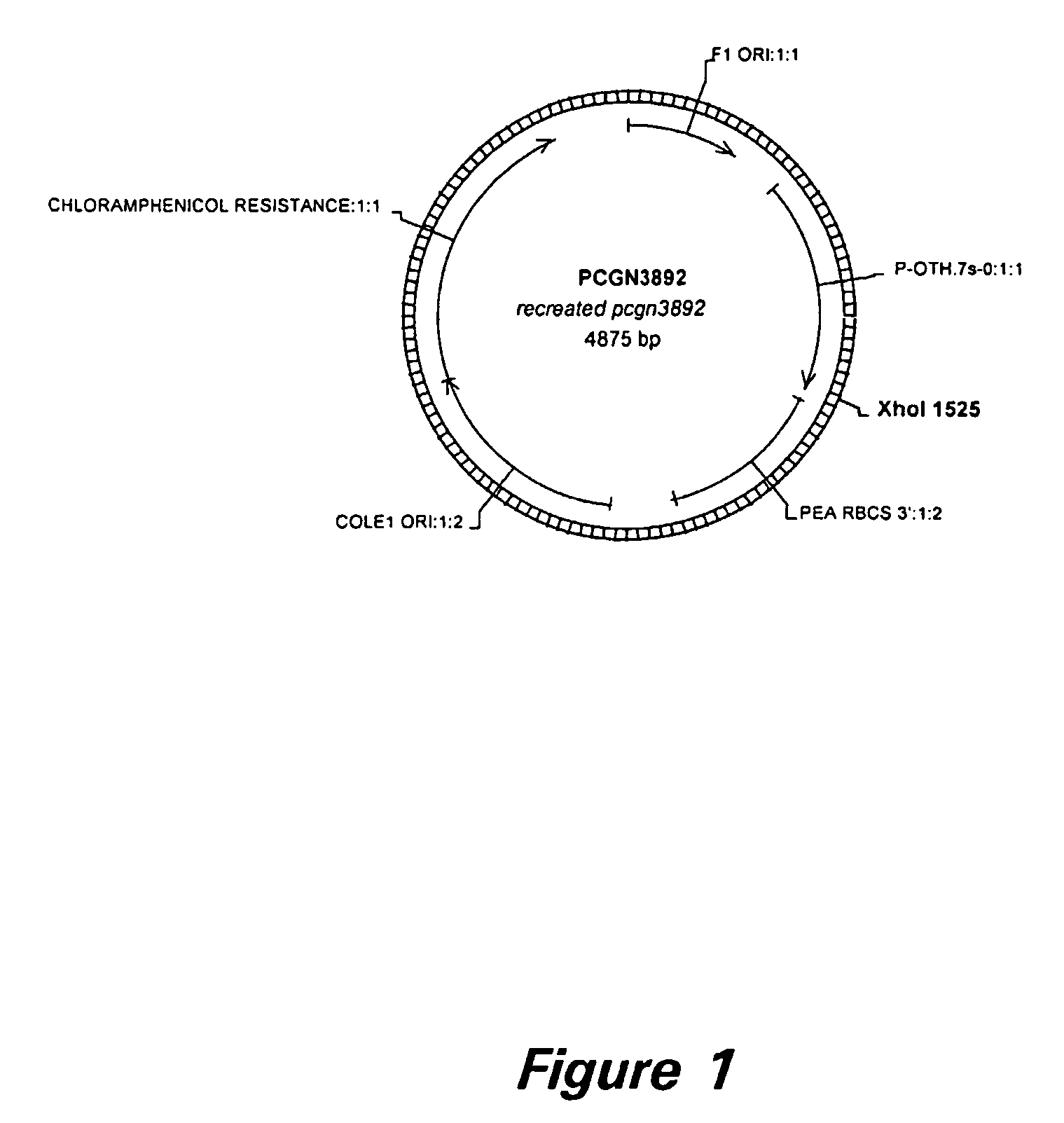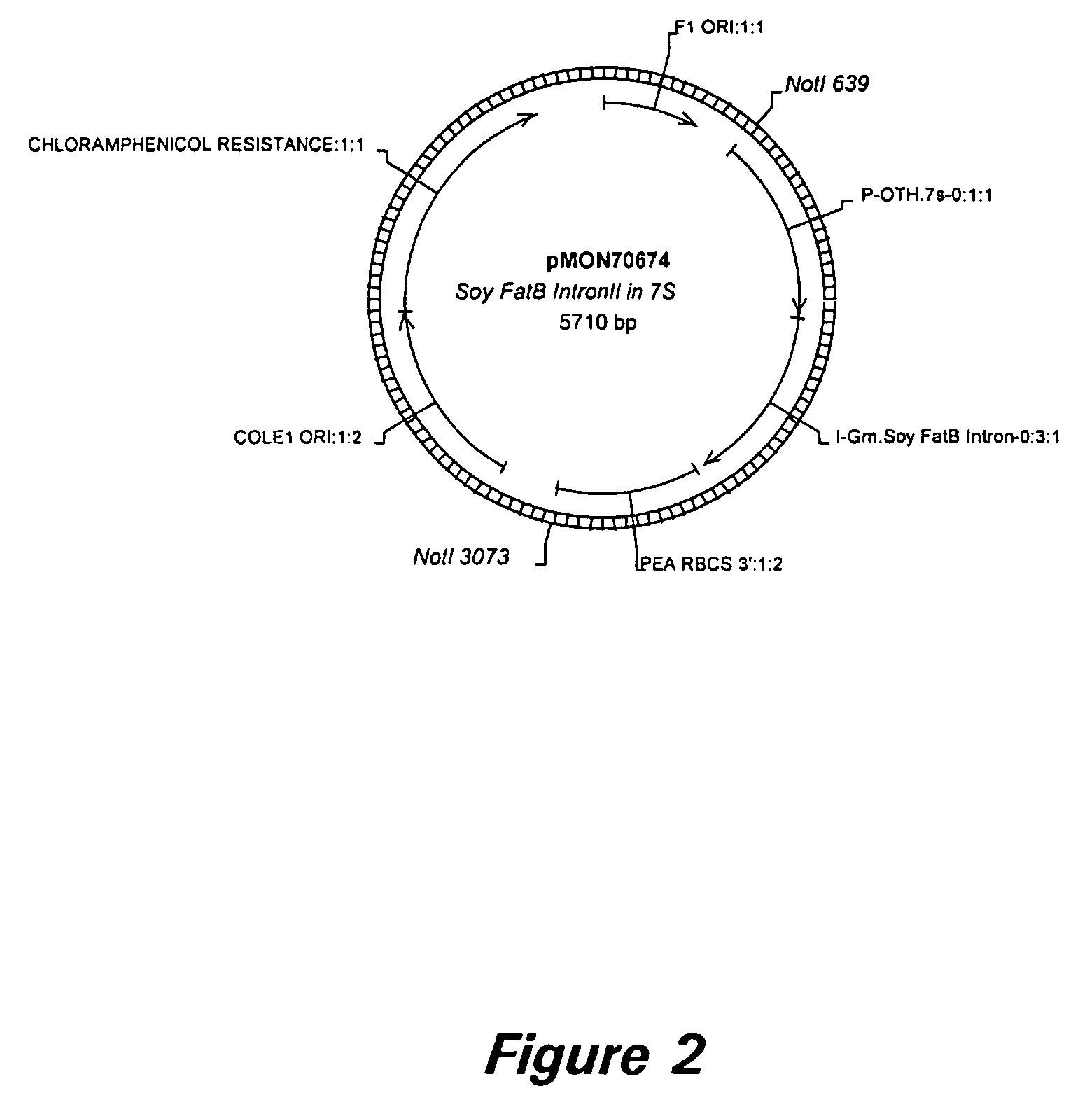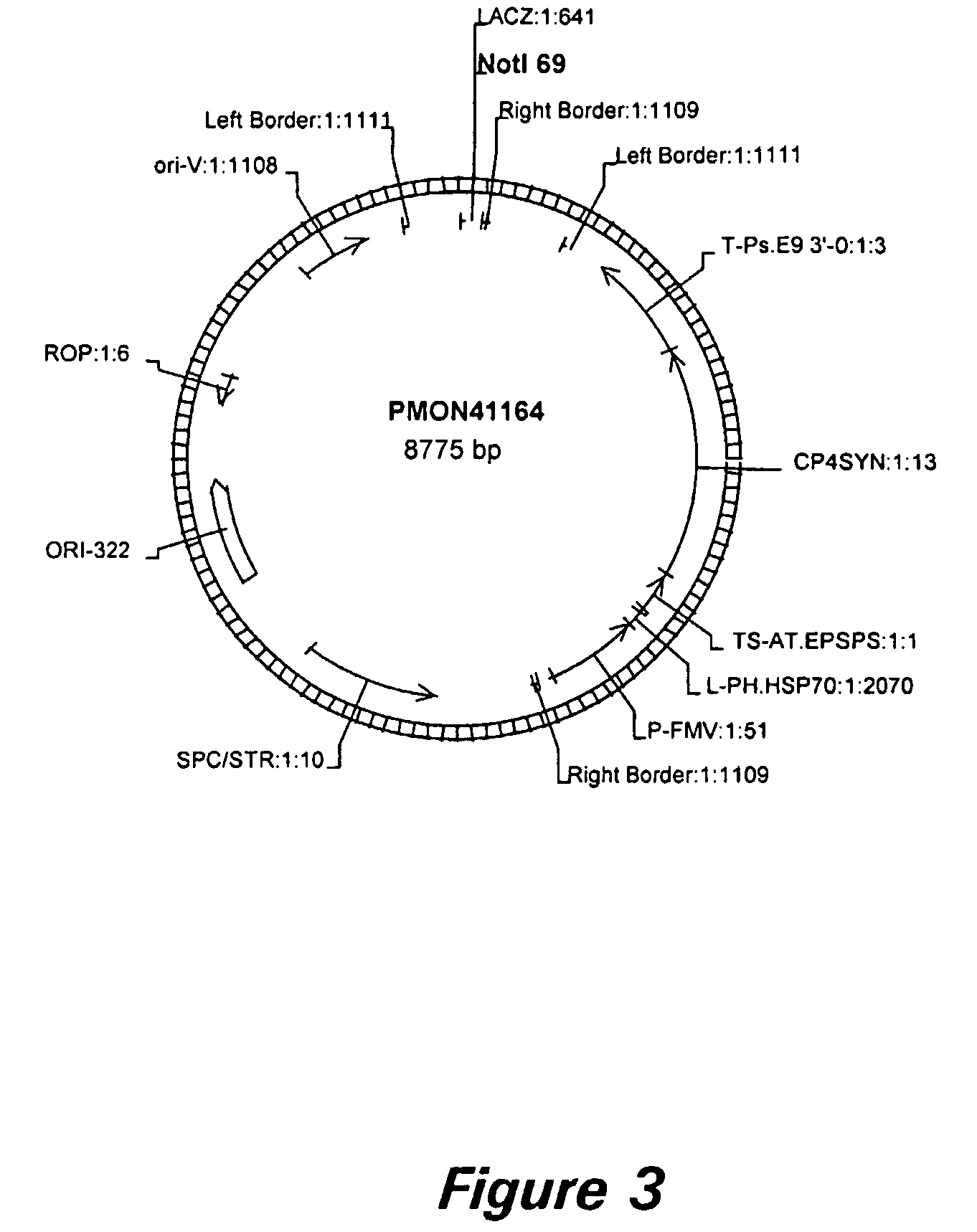Thioesterase-related nucleic acid sequences and methods of use for the production of plants with modified fatty acid composition
a technology of thioesterase and nucleic acid sequence, which is applied in the direction of hydrolases, enzymes, biochemical instruments and processes, etc., can solve the problems of low temperature clouding and undesirable high melting point of saturated fatty acids
- Summary
- Abstract
- Description
- Claims
- Application Information
AI Technical Summary
Problems solved by technology
Method used
Image
Examples
example 1
Cloning of FATB Thioesterasc Genomic Sequences
[0168] Leaf tissue is obtained from Asgrow soy variety A3244, ground up in liquid nitrogen and stored at −80° C. until use. Six ml of SDS Extraction buffer (650 ml sterile ddH20, 100 ml 1M Tris-Cl pH 8, 100 ml 0.25M EDTA, 50 ml 20% SDS, 100 ml 5M NaCl, 4 μl beta-mercaptoethanol) is added to 2 ml of frozen / ground leaf tissue, and the mixture is incubated at 65° C. for 45 minutes. The sample is shaken every 15 minutes. 2 ml of ice-cold 5M potassium acetate is added to the sample, the sample is shaken, and then is incubated on ice for 20 minutes. 3 ml of CHCl3 is added to the sample and the sample is shaken for 10 minutes.
[0169] The sample is centrifuged at 10,000 rpm for 20 minutes and the supernatant is collected. 2 ml of isopropanol is added to the supernatant and mixed. The sample is then centrifuged at 10,000 rpm for 20 minutes and the supernatant is drained. The pellet is resuspended in 200 μl RNase and incubated at 65° C. for 20 mi...
example 2
Plant Expression Constructs
[0173] A soybean FATB intron II sequence (SEQ ID NO: 3) is amplified via PCR using the partial FATB cloned genomic DNA sequence (SEQ ID NO: 10) as a template and primers 18133 (SEQ ID NO: 17) and 18134 (SEQ ID NO: 18). PCR amplification is carried out as follows: 1 cycle, 95° C. for 10 minutes; 25 cycles, 95° C. for 30 sec, 62° C. for 30 sec, 72° C. for 30 sec; 1 cycle, 72° C. for 7 minutes.
[0174] PCR amplification resulted in a product (SEQ ID NO: 19) that is 854 bp long. The PCR product is cloned directly into the expression cassette pCGN3892 (FIG. 1) in sense orientation, by way of XhoI sites engineered onto the 5′ ends of the PCR primers, to form pMON70674 (FIG. 2). Vector pCGN3892 contains the soybean 7S promoter and a pea RBCS 3′. pMON70674 is then cut with NotI and ligated into pMON41164, a vector that contains the CP4 gene regulated by the FMV promoter (FIG. 3). The resulting gene expression construct, pMON70678 (FIG. 4), is used for transformati...
example 3
Plant Transformation And Analysis
[0178] Linear DNA fragments containing the expression constructs of the soybean FATB introns are stably introduced into soybean (Asgrow variety A3244) by the method of Martinell et al., U. S. Pat. No. 6,384,301. Transformed soybean plants are identified by selection on media containing glyphosate.
[0179] Fatty acid compositions are analyzed from seed of soybean lines transformed with the intron expression constructs using gas chromatography. R1 single seed oil compositions of plants harboring pMON70678 demonstrate that the saturated and unsaturated fatty acid compositions are altered in the oil of seeds from transgenic soybean lines as compared to those of the seed from non-transformed soybean (Table 1). In particular, 16:0 is reduced in transgenic seeds. Selections can be made from such lines depending on the desired relative fatty acid composition. In addition, since each of the introns is able to modify the levels of each fatty acid to varying ex...
PUM
| Property | Measurement | Unit |
|---|---|---|
| Fraction | aaaaa | aaaaa |
| Fraction | aaaaa | aaaaa |
| Fraction | aaaaa | aaaaa |
Abstract
Description
Claims
Application Information
 Login to View More
Login to View More - R&D
- Intellectual Property
- Life Sciences
- Materials
- Tech Scout
- Unparalleled Data Quality
- Higher Quality Content
- 60% Fewer Hallucinations
Browse by: Latest US Patents, China's latest patents, Technical Efficacy Thesaurus, Application Domain, Technology Topic, Popular Technical Reports.
© 2025 PatSnap. All rights reserved.Legal|Privacy policy|Modern Slavery Act Transparency Statement|Sitemap|About US| Contact US: help@patsnap.com



